site search
online catalog
CIVIL WAR INFANTRY SERGEANT’S FOUR-BUTTON FATIGUE BLOUSE

Hover to zoom

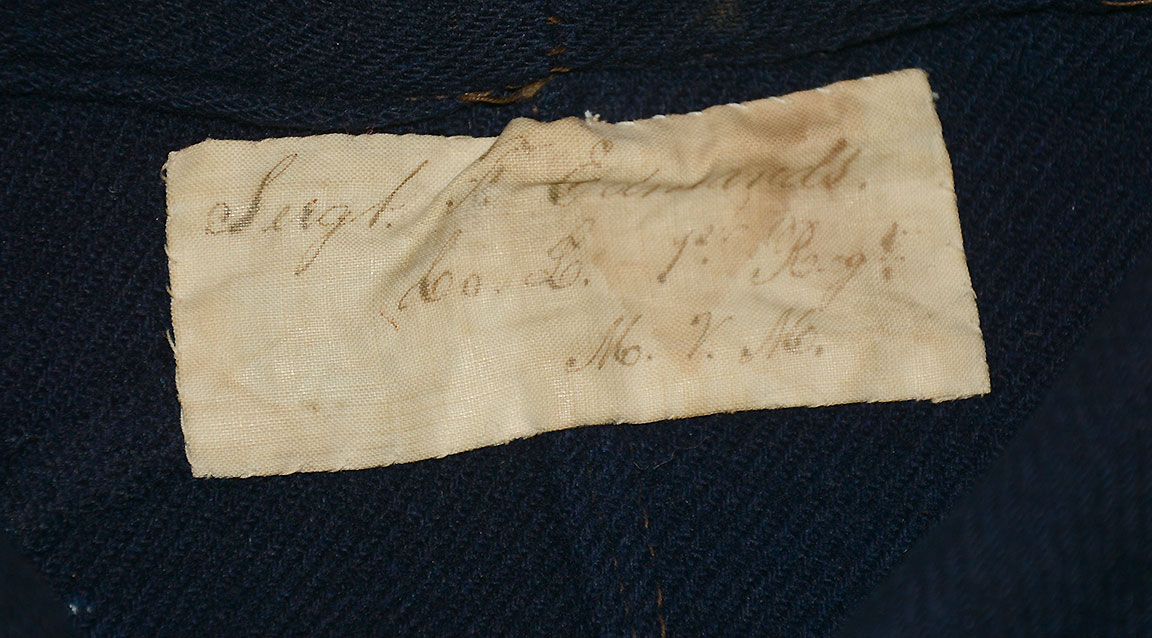
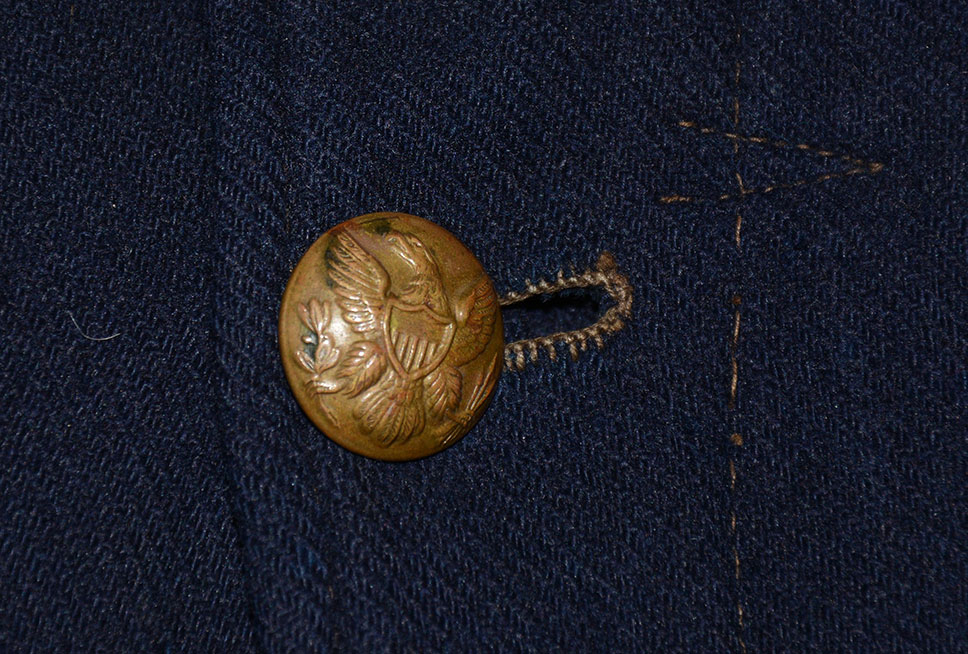

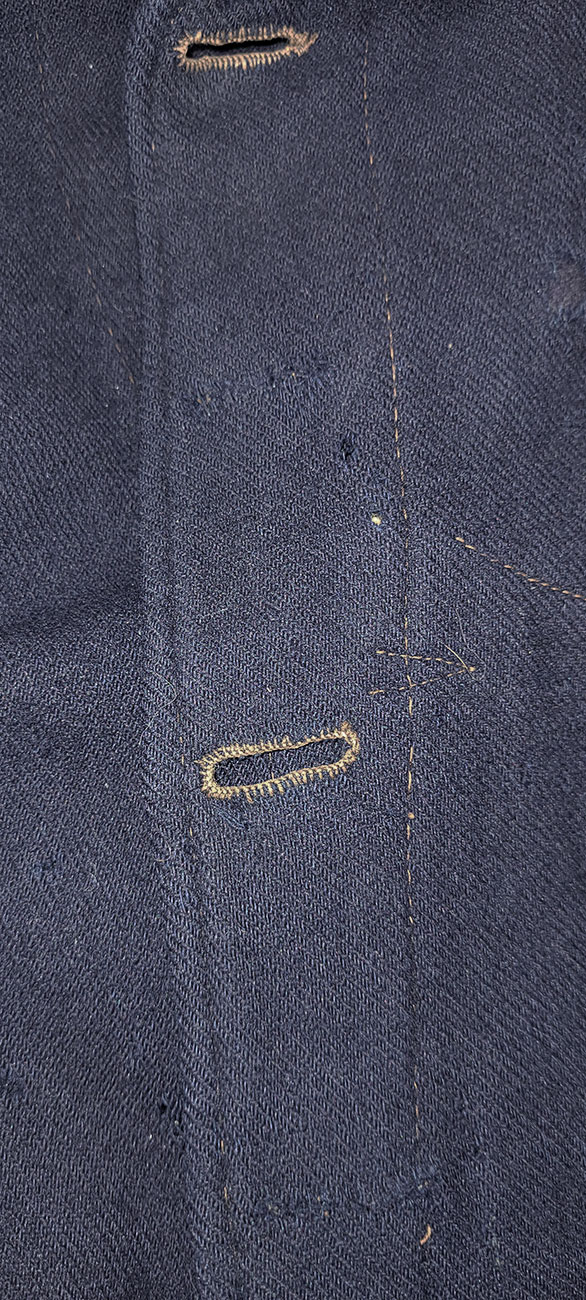
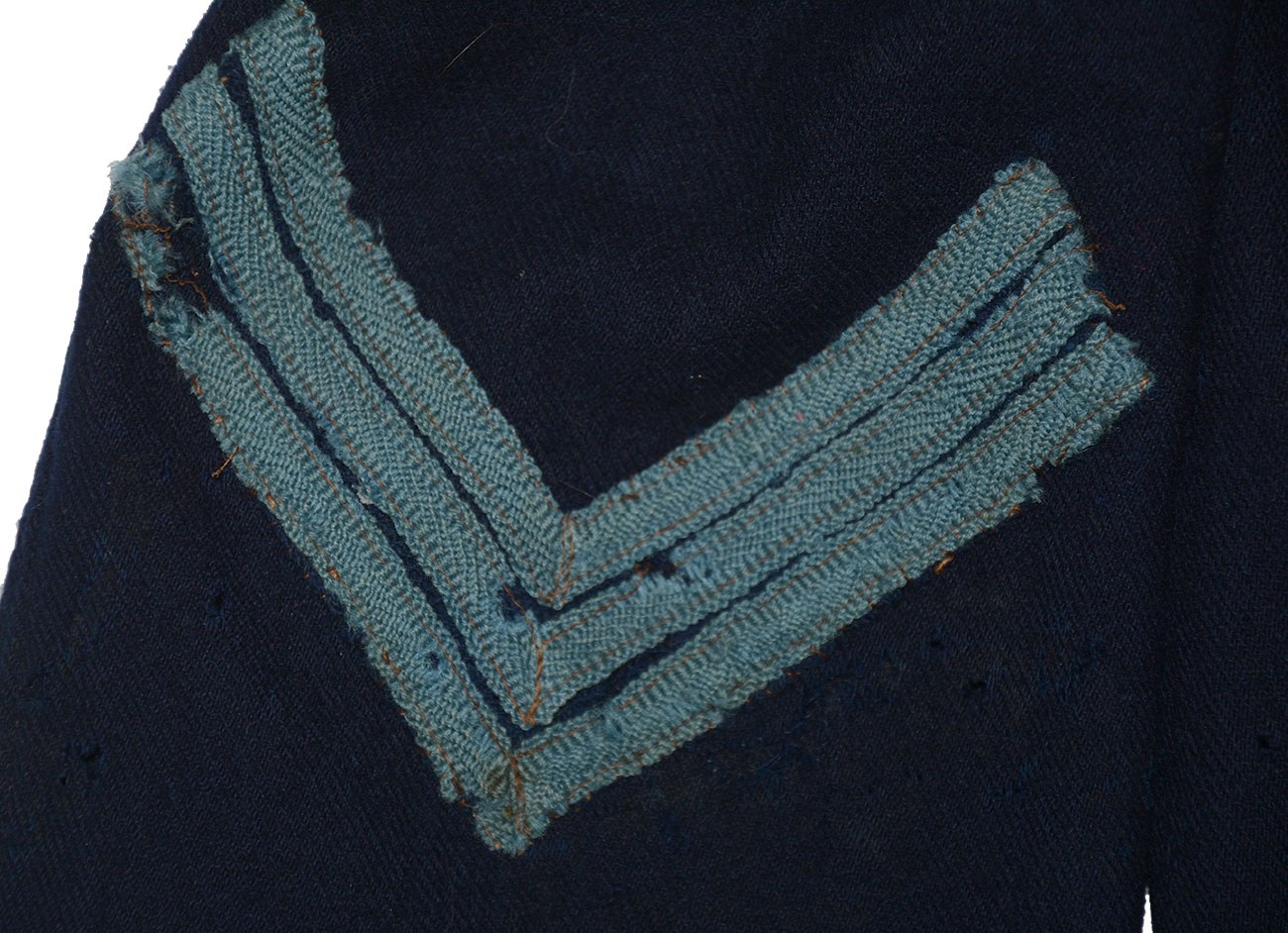

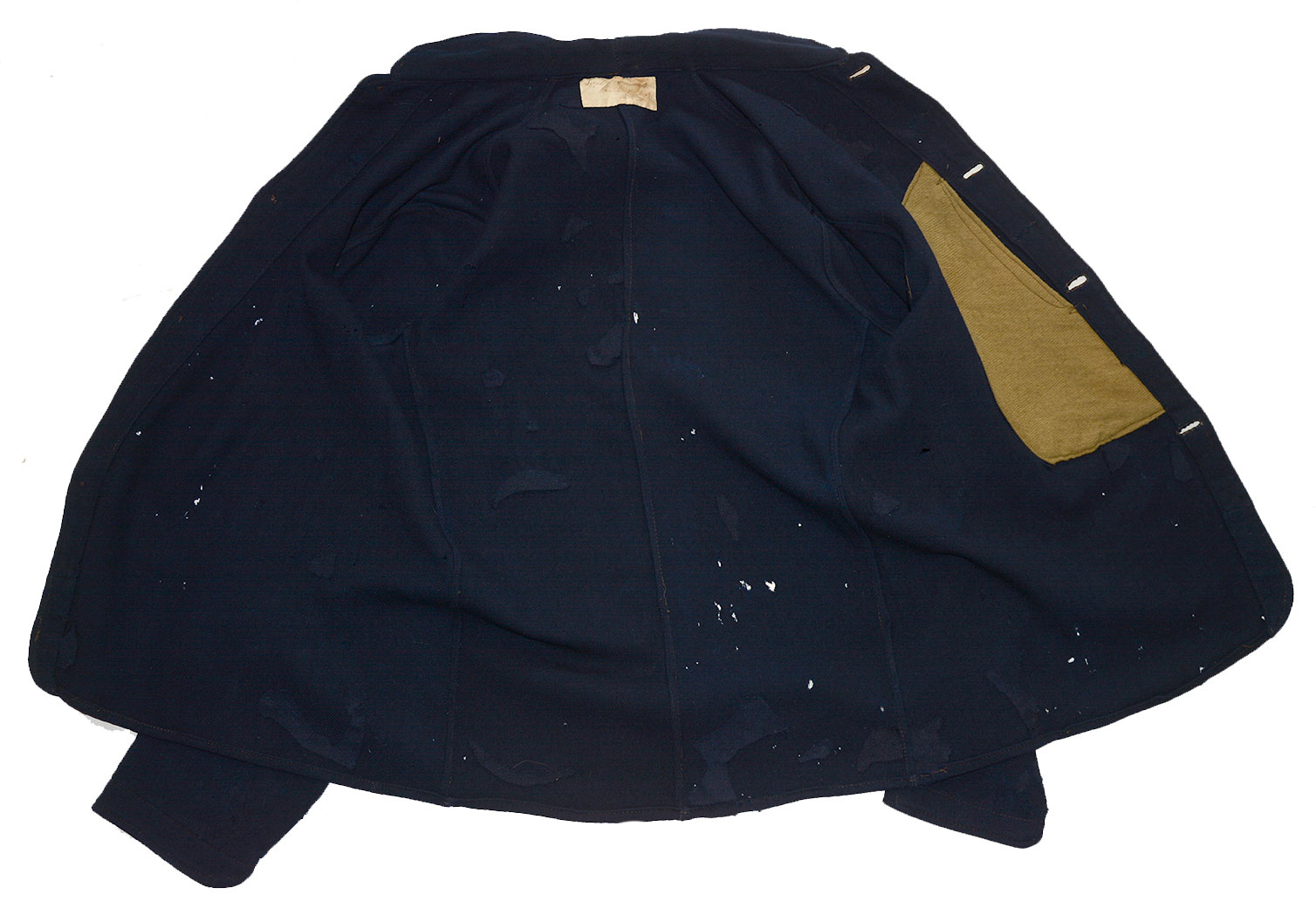
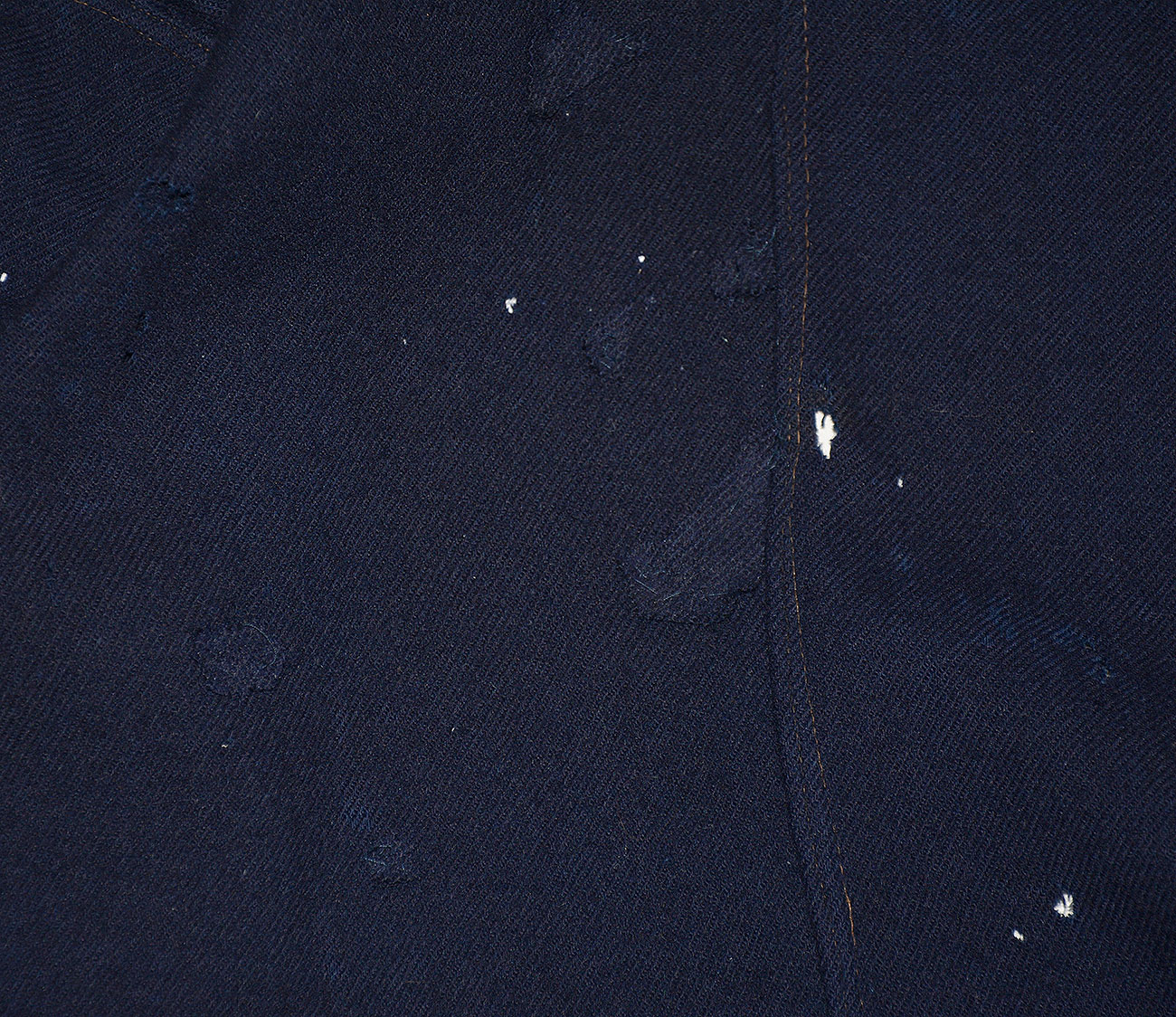
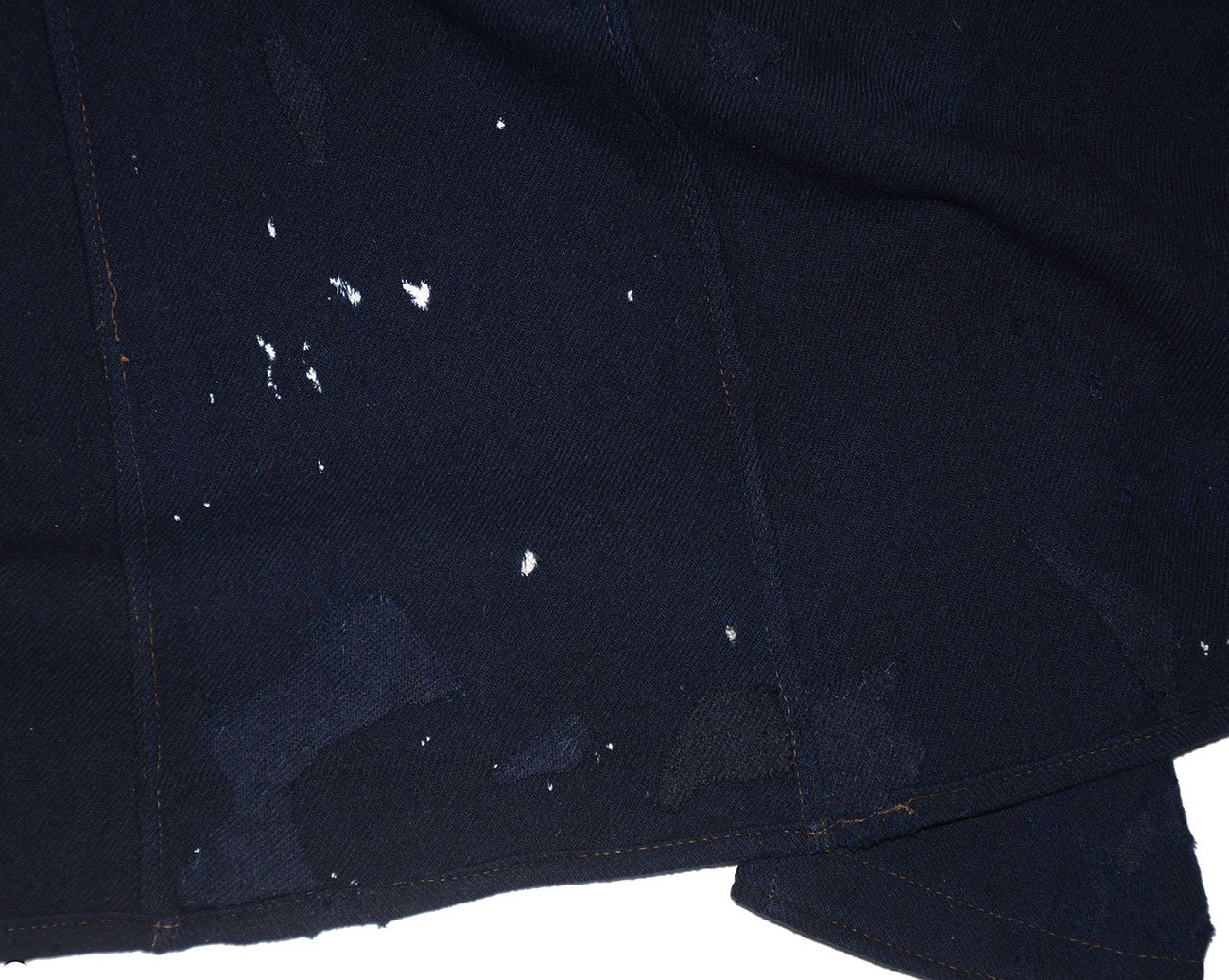
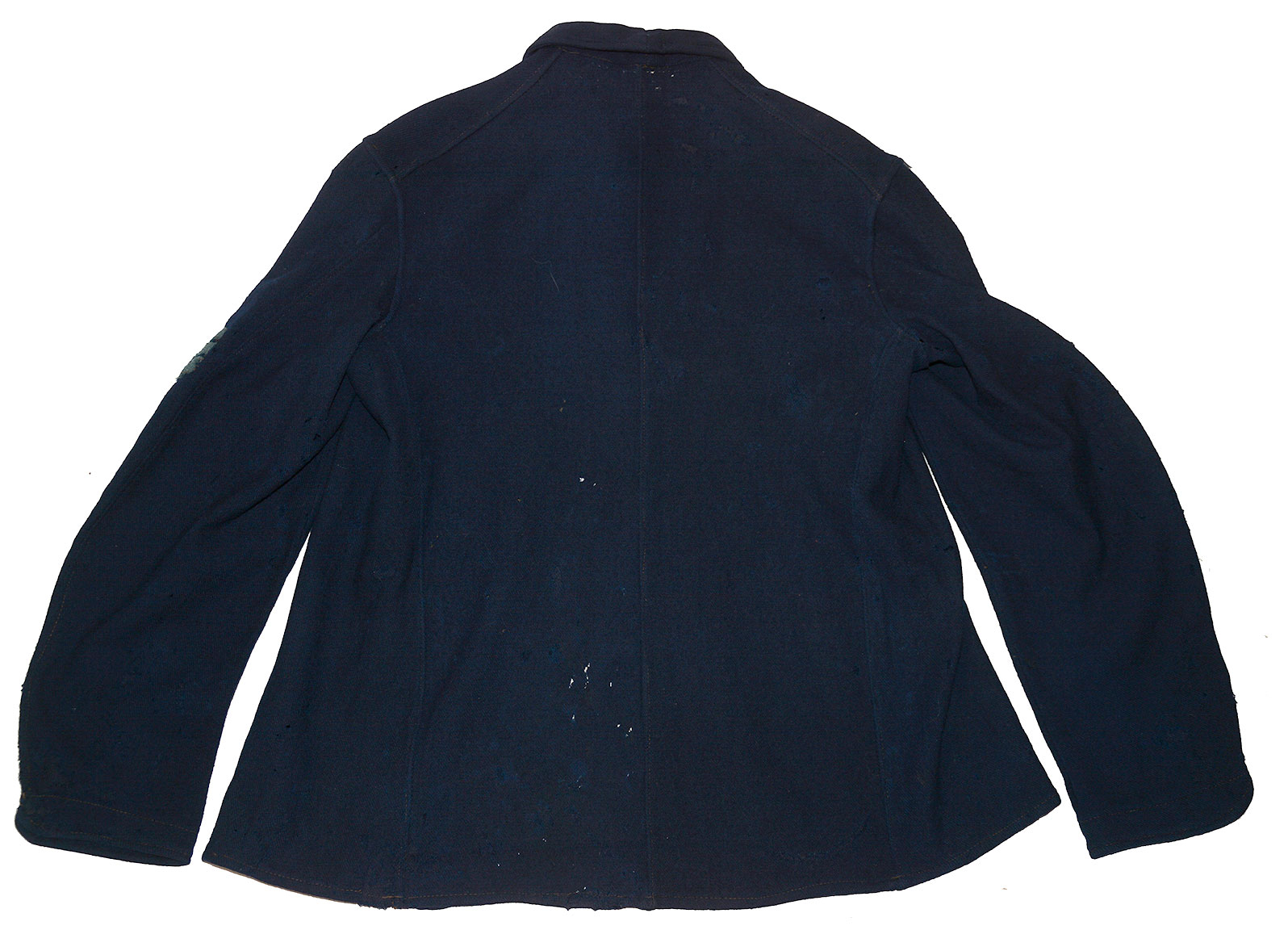
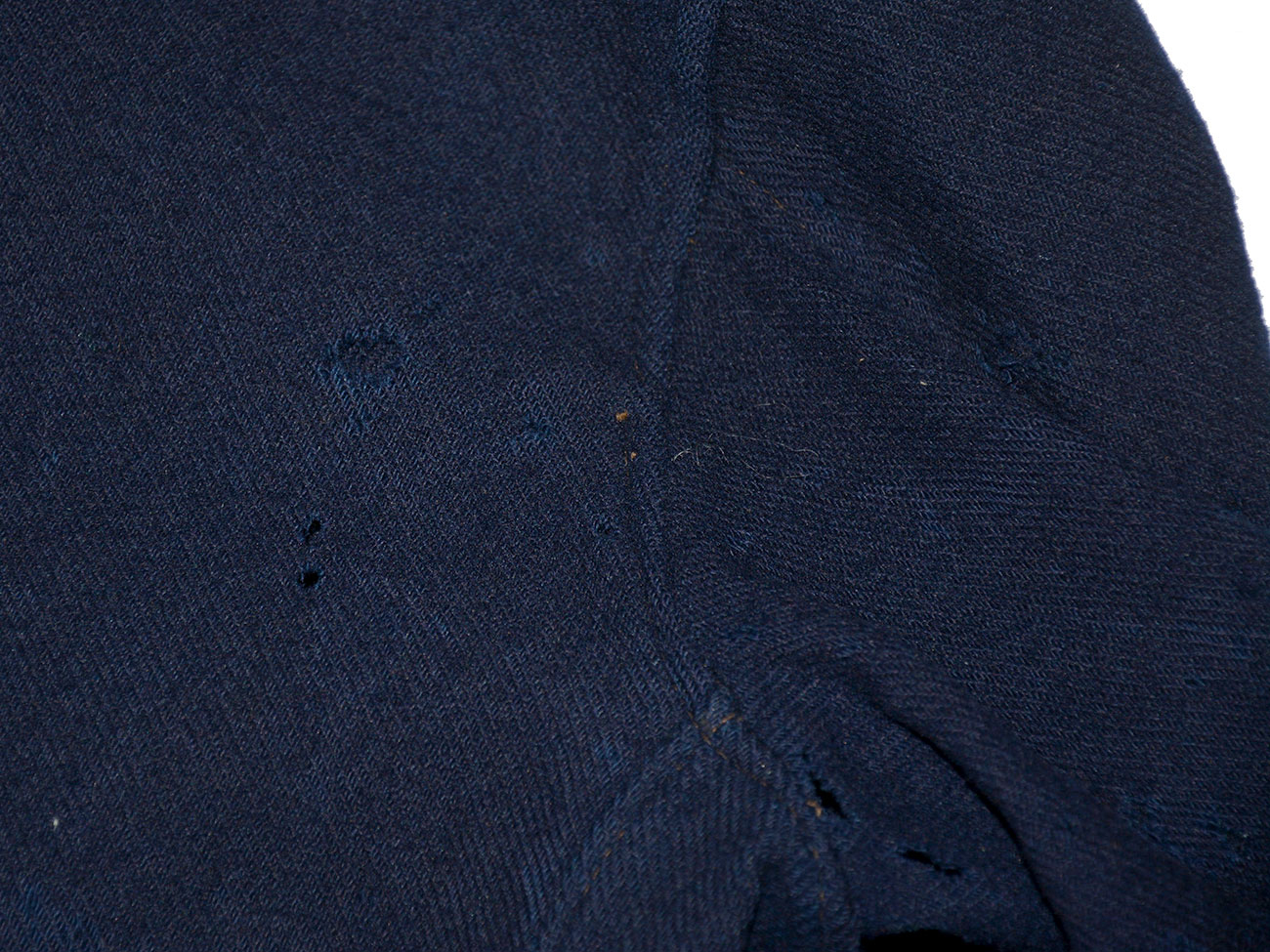
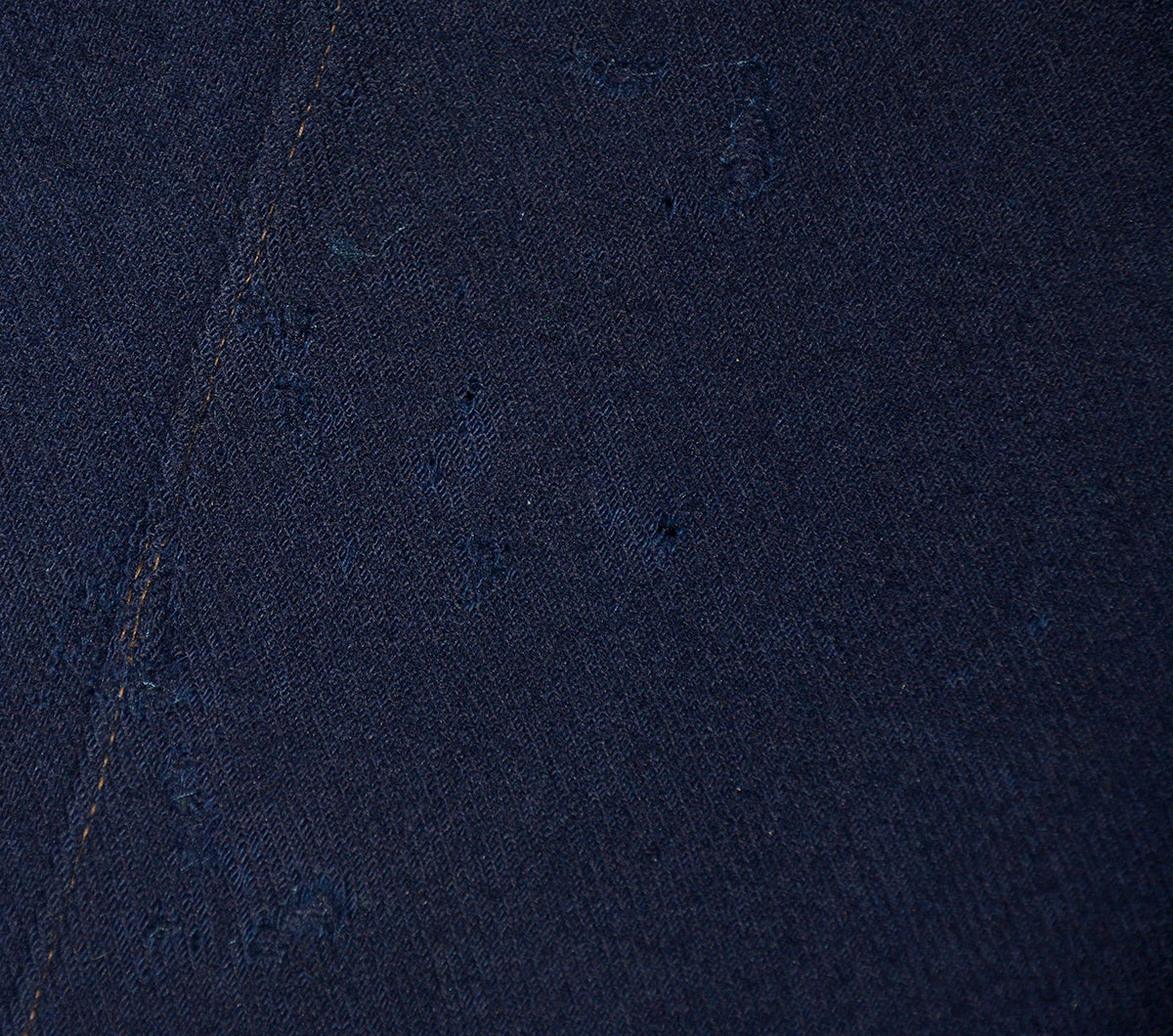
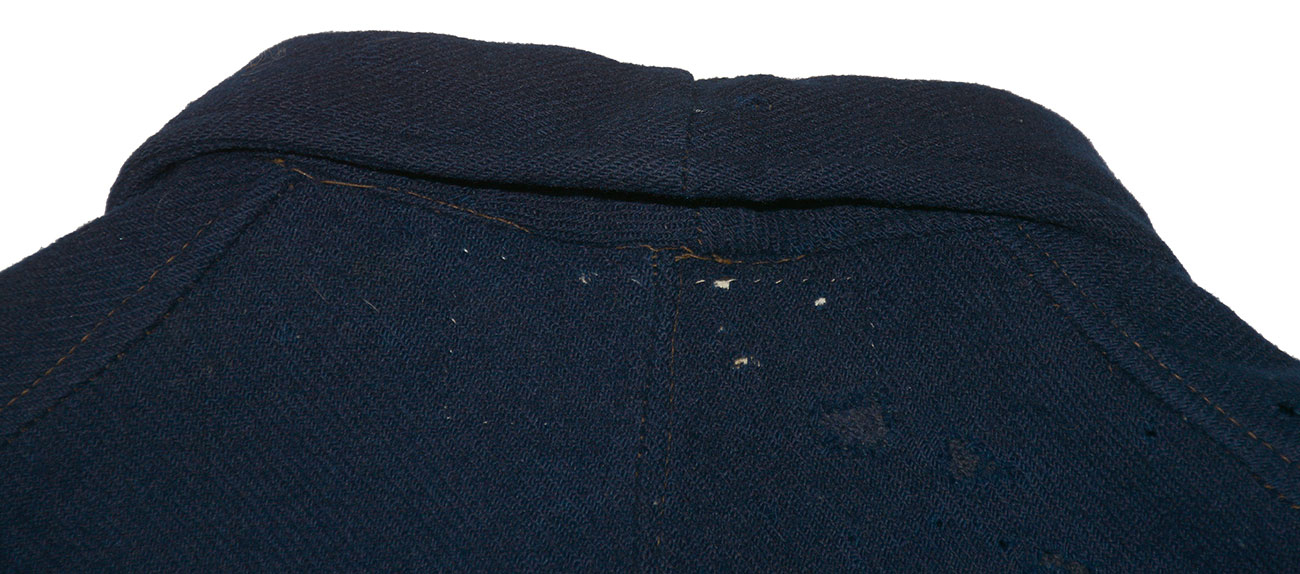
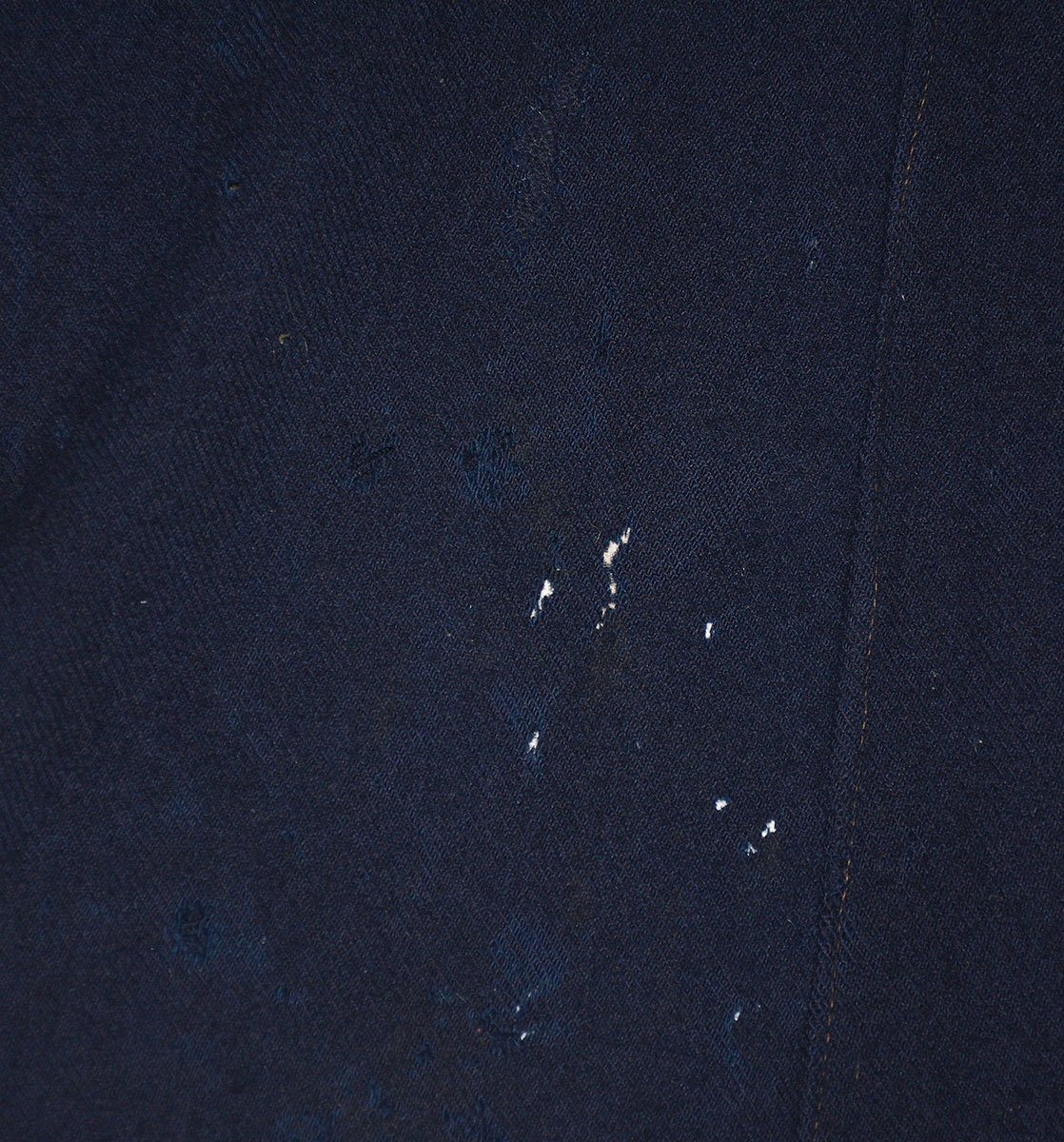
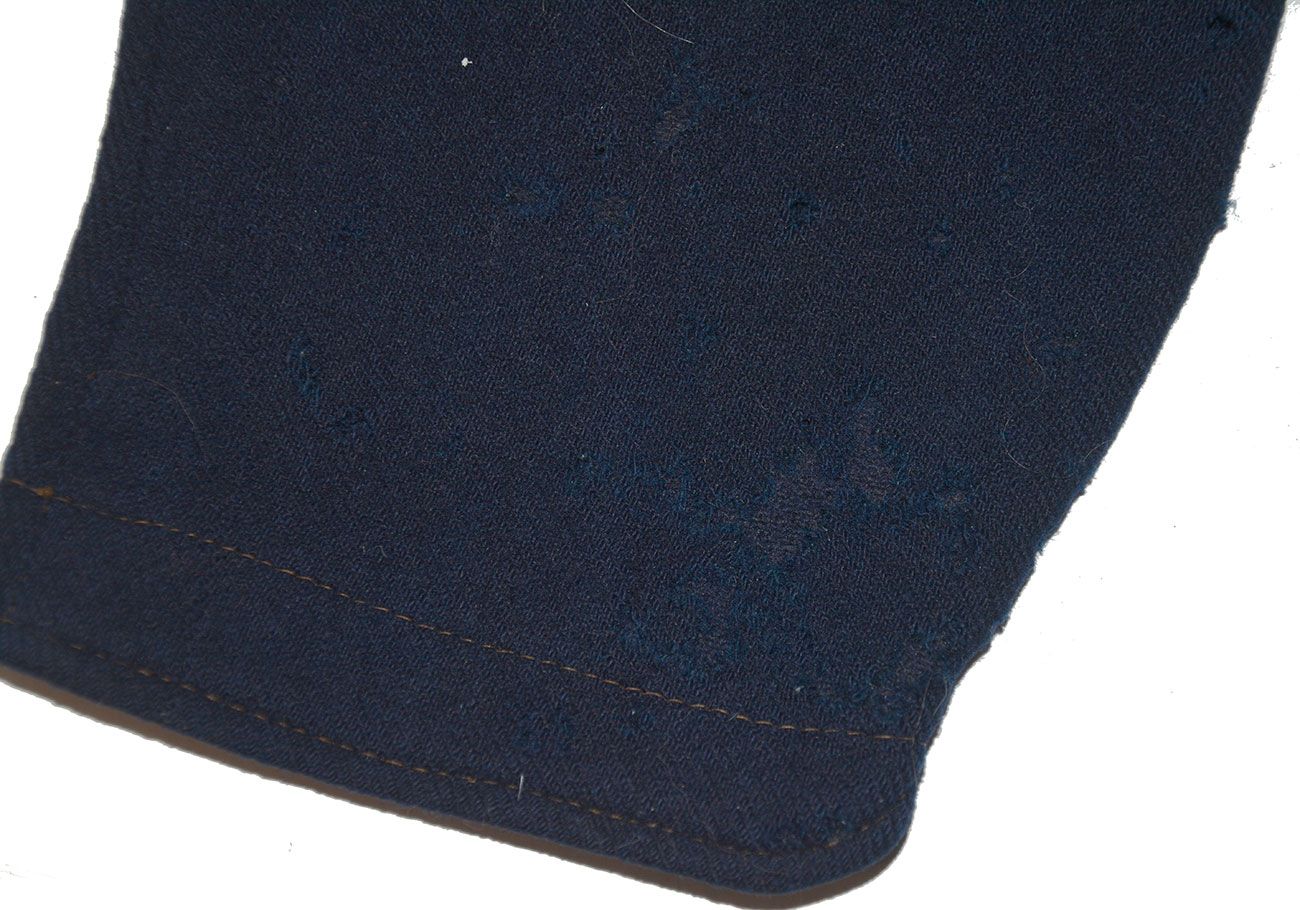
$29,500.00
Quantity Available: 1
Item Code: 1268-268
Shipping: Determined by Method & Location of buyer
To Order:
Call 717-334-0347,
Fax 717-334-5016, or E-mail
This is a very good example of a very rare Civil War uniform: the 4-button blouse originally designated for “fatigue” wear in the regular army, but which quickly became the standard field uniform in the Union army, worn by enlisted men in all branches of service, produced in the millions, in a lined and unlined version, and extremely rare today precisely because it was so common, so simple, cheaply made, practical and so unprepossessing as to hardly merit preservation by a veteran or family member. For a general introduction to the garment there are many print and online resources. We still like “The Fatigue Blouse,” by the redoubtable Edward Quigley in the Columbia Rifles Research Compendium. This particular blouse, showing signs of use and still bearing a pair of infantry sergeant’s chevrons, was published in 2003 in Patrick Brown’s “For Fatigue Purposes … The Army Sack Coat of 1857-1872,” as “Coat #3” in his examples in Appendix 1, pp.66-68; and in Michael Cunningham’s “Federal Soldier Modifications of Civil War Uniforms, Part 1: Jackets, Coats, Trousers and Headgear,” in The Military Collector and Historian 72.3 (Fall 2020) pp.195-209.
The coat has a four-piece, unlined body, with single interior pocket in the left breast, standard roll-over collar, and four CW general service eagle buttons. It was modified during its period of use by the addition of three buttons and buttonholes, situated between the existing ones, which would have given the coat a somewhat nattier appearance with seven buttons and the lapels lying flatter. When this was done is unknown, but such modifications are occasionally seen in Civil War photos and at least one other example, worn by an officer, is in the Gettysburg NPS collections.
The coat shows scattered moth damage overall, perhaps 10%, but mainly small holes and not obtrusive with some larger spots given a matching colored backing by a collector and with the three additional buttonholes, that were rather crudely done, closed up to restore the coat to its original appearance, so that it is solid and displays very well The worsted wool chevrons show moth bites, but preserve their light blue color. Brown’s 2003 summary description reads as follows: “The coat has sergeant's chevrons in sky blue worsted twill tape affixed to the sleeves by hand stitching. The pocket is made of a loose weave brown wool flannel. The coat is, with the exception of the buttonholes, entirely machine sewn. It shows at best only moderate skill in tailoring. In fact, the coat exhibits all the characteristics of a ready-made, mass produced garment with emphasis on serviceability over quality. Wavy stitching, missed seam lines and puckered felling are found all over the coat. Like most sack coats it was not meant to be a thing of beauty. It is pieced in the facings and collar, meaning that scrap pieces were used to make a larger, more useable piece for the coat. All seam allowances have been felled by machine.” He also notes the pocket, “is a good example of how the pocket was constructed on most unlined blouses. The piece was simply stitched through to the left-front piece of the coat, sometimes with a facing piece over the pocket opening, sometimes not. Small reinforcing rectangles or triangles of stitching were usually placed at each end of the pocket opening as shown here. These were to keep the stitching from pulling loose from hands constantly going in and out of the pocket...” Please see our photographs.
The coat bears a cloth label in the upper back, measuring 1-1/8” X 2-5/8” and inscribed in brown ink: “Sergt. F. Edmands / Co. L 1st Regt. / M.V.M.” Edmands was not identified in the 2003 article, but the MCH article identifies him, correctly, as Frank Edmands of Newton, MA, born in 1849, who served in Co. L of the 1st Mass. Volunteer Militia as a sergeant in their summer 1870 and 1871 encampments, with the company changing its designation to Co. C in 1872, giving a narrow window for the label. This identification was made as early as 2014 and is covered in correspondence between two collectors included in the file with the coat. As Civil War production the coat could have been army surplus, but seems equally likely to have belonged originally to one of Frank Edmands’ older brothers, both of whom saw infantry service as sergeants during the war. The 2020 MCH article and correspondence in the file makes the case for its wartime use by Joseph C. Edmands, who was in Co. K 24th Massachusetts from 10/4/1861 to his discharge for promotion to Captain 7/30/62, a promotion received while he was on furlough home, making it possible he left the coat behind at that point. He amassed a considerable war record, but as an enlisted man seems to have only served as company First Sergeant, and we see no signs of a lozenge above the stripes on the coat. A rather better candidate would be brother Thomas S. Edmands, who served in Co. B 44th Massachusetts, enlisting 9/1/1862, mustered in as a private 9/12/62 and was appointed sergeant the same day, a rank at which he served until mustered out with the regiment 6/18/63. (A misreading of his record seems to have caused some confusion in the collector correspondence. This service record and dating are confirmed in the muster roll abstracts in his file and by “Mass. Soldiers and Sailors.”)
That regiment was a nine-month unit that saw action in North Carolina, landing at Morehead City and then reaching New Bern in October, where it joined Stevenson’s brigade. Dyer’s Compendium gives the following summary of service: “Expedition from Newbern November 2-12, 1862. Action at Rawle's Mills November 2. Demonstration on Newbern November 11. Foster's Expedition to Goldsboro December 11-20. Kinston December 14. Whitehall December 16. Goldsboro December 17. At Newbern till February 10, 1863. Moved to Plymouth, N. C., February 10, and duty there till March 15. (Cos. "B" and "F" detached on outpost duty at Batchelor's Creek February 10 to May 1.) Skirmishes Deep Gully, Newbern, March 13-14 (2 Cos.). Regiment moved to Washington March 15. Siege of Washington March 30-April 20. Skirmish at Washington March 30 (Cos. "A" and "G"). Skirmishes at Washington April 3 and 15. Expedition from Newbern to relief of Little Washington April 7-10 (2 Cos.). Regiment moved to Newbern April 22-24, and duty there till June 6. Expedition toward Kinston April 27-May 1. Dover Road April 28. Moved to Boston, Mass., June 6-10. Mustered out June 18, 1863.” Their losses amounted to 11 killed or mortally wounded, an unstated number of wounded who recovered, and 1 officer and 29 enlisted men who died of disease.
Regardless of possible wear by this Edmands brother and wartime field service, the coat is strong example of a scarce uniform with considerable eye-appeal, and one that could be the centerpiece of a Union infantry display or, given its rarity, even a general Civil War uniform collection. [sr] [ph:L]
~~~~~~~~~~~~~~~~~~~~~~~~~~~~~~~~~~~
THIS ITEM, AS WITH ALL OTHER ITEMS AVAILABLE ON OUR WEB SITE,
MAY BE PURCHASED THROUGH OUR LAYAWAY PROGRAM.
CLICK HERE FOR OUR POLICIES AND TERMS.
THANK YOU!
Inquire About CIVIL WAR INFANTRY SERGEANT’S FOUR-BUTTON FATIGUE BLOUSE
Most Popular
Historical Firearms Stolen From The National Civil War Museum In Harrisburg, Pa »
Theft From Gravesite Of Gen. John Reynolds »
Selection Of Unframed Prints By Don Troiani »
Fine Condition Brass Infantry Bugle Insignia »
Large English Bowie Knife With Sheath 1870’S – 1880’S »
Imported (Clauberg) Us Model 1860 Light Cavalry Officer's Saber »
featured item
RARE WAR OF 1812 SIMEON NORTH U.S. MODEL 1813 ARMY PISTOL
This is a very professional and very well done reconversion to flint of a very hard to find US military pistol, in strong condition, showing very good metal, sharp lock, proof and mating markings, and wood with generally good surface showing the… (431-69). Learn More »


